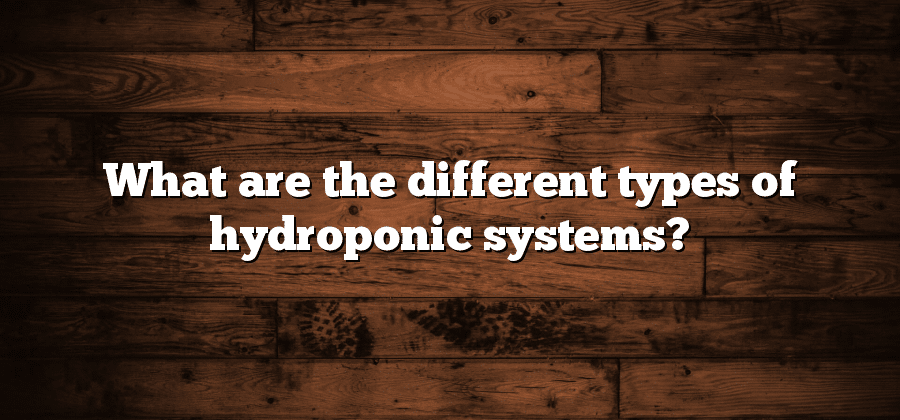Nutrient Film Technique (NFT)
Nutrient Film Technique (NFT) is a popular hydroponic system that allows plants to grow in a shallow, continuously flowing film of nutrient-rich solution. In this system, plants are placed in troughs or channels with a slight slope, allowing the nutrient solution to flow over the roots in a thin film. This method ensures that the roots have constant access to water and nutrients, while also providing them with ample oxygen.
One of the main advantages of NFT is its efficiency in water and nutrient usage. Since the solution is continuously flowing, it requires less water compared to other hydroponic systems. Additionally, the nutrient solution can be easily recycled and reused, minimizing waste and reducing the overall environmental impact. Furthermore, NFT systems are often compact and versatile, making them suitable for various settings, including home gardens, commercial vertical farms, and research facilities.
However, it is important to note that NFT is not without its challenges. The shallow flow of nutrient solution can lead to potential issues such as clogging or drying out, which can negatively impact plant growth. Moreover, the system relies heavily on a continuous power supply to maintain the flow, so any interruption in electricity might disrupt the growth of plants. These factors underline the need for careful monitoring and maintenance to ensure optimal performance of the NFT system.
Deep Water Culture (DWC)
Deep Water Culture (DWC) is a hydroponic system that is highly effective and widely used in modern agriculture. In this system, plants are suspended with their roots directly submerged in a nutrient-rich solution. The roots receive a constant supply of oxygen, essential for their growth and development, through the use of air stones or diffusers.
One of the main advantages of the Deep Water Culture (DWC) system is its simplicity. It requires minimal equipment and setup, making it easy to maintain even for beginners in hydroponic gardening. Additionally, this system allows for rapid nutrient uptake by the plants, resulting in faster growth and higher crop yields. Its ability to provide ample oxygen to the roots ensures optimal nutrient absorption, promoting healthy plant growth.
Aeroponics
Aeroponics is a unique and innovative hydroponic system that offers numerous advantages for plant growth. Unlike other hydroponic systems, aeroponics does not require a growing medium such as soil or water. Instead, plants are suspended in air and their roots are misted with a nutrient-rich solution. This method allows for maximum oxygen exposure to the roots, promoting faster growth and healthier plants.
One of the main benefits of aeroponics is its efficiency in water usage. Compared to traditional soil-based farming, aeroponics uses significantly less water, making it a sustainable choice for agriculture. Additionally, because the roots are exposed to air, there is no risk of overwatering or waterlogging, which can lead to root rot and other plant diseases. This means that plants in aeroponic systems have a reduced risk of disease and can thrive in an optimal environment, resulting in higher yields and better quality crops.
Ebb and Flow (Flood and Drain)
Ebb and Flow, also known as the Flood and Drain system, is a popular hydroponic technique that offers a versatile and efficient way to grow plants. In this system, plants are placed in trays or pots filled with a growing medium, such as gravel or perlite. The trays or pots are periodically flooded with nutrient-rich water and then allowed to drain back into a reservoir.
One of the advantages of the Ebb and Flow system is that it mimics the natural cycle of water absorption and drainage that occurs in traditional soil-based gardening. This allows the plants to have access to both nutrients and oxygen, promoting healthy root growth and overall plant development. Additionally, the Ebb and Flow system is relatively low-cost and easy to set up, making it a great option for beginners or hobbyist growers.
By controlling the frequency and duration of the flood and drain cycles, growers can easily adjust the nutrient delivery to their plants, ensuring optimal conditions for growth. However, it is important to monitor the system closely to prevent any potential issues such as clogging or over-flooding. Overall, the Ebb and Flow system is a reliable and efficient hydroponic technique that can produce impressive yields with minimal effort and resources.
Wick System
The Wick System is a simple and cost-effective hydroponic system that is suitable for small-scale growers or beginners. This system relies on a wick, typically made of cotton or nylon, to transport water and nutrients from a reservoir to the plant roots. The wick acts as a passive conduit, drawing up the solution through capillary action.
One advantage of the Wick System is its simplicity. There are no pumps or complex equipment required, making it easy to set up and maintain. It is also a great option for growing herbs or small potted plants. However, it may not be suitable for larger plants or crops that have high water and nutrient requirements, as the wick can only provide a limited supply. Overall, the Wick System is a straightforward and accessible choice for those looking to dip their toes into hydroponics.






